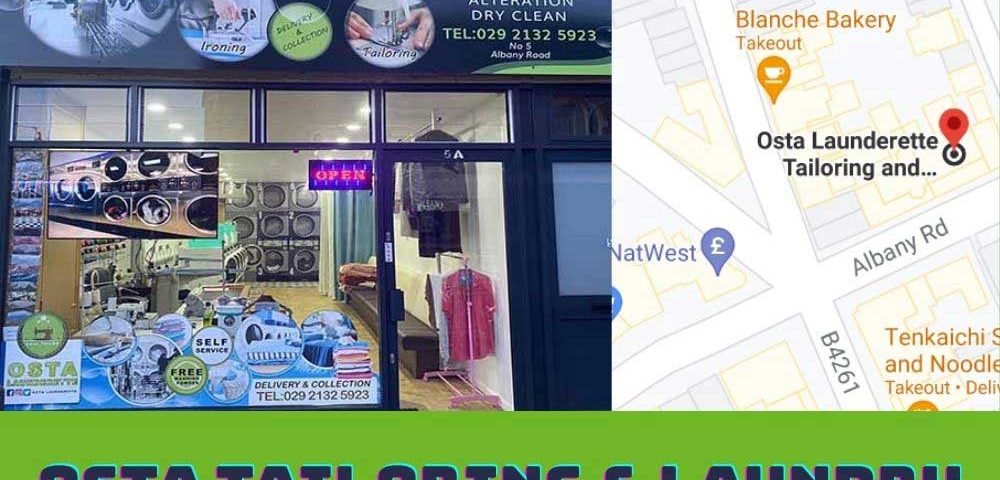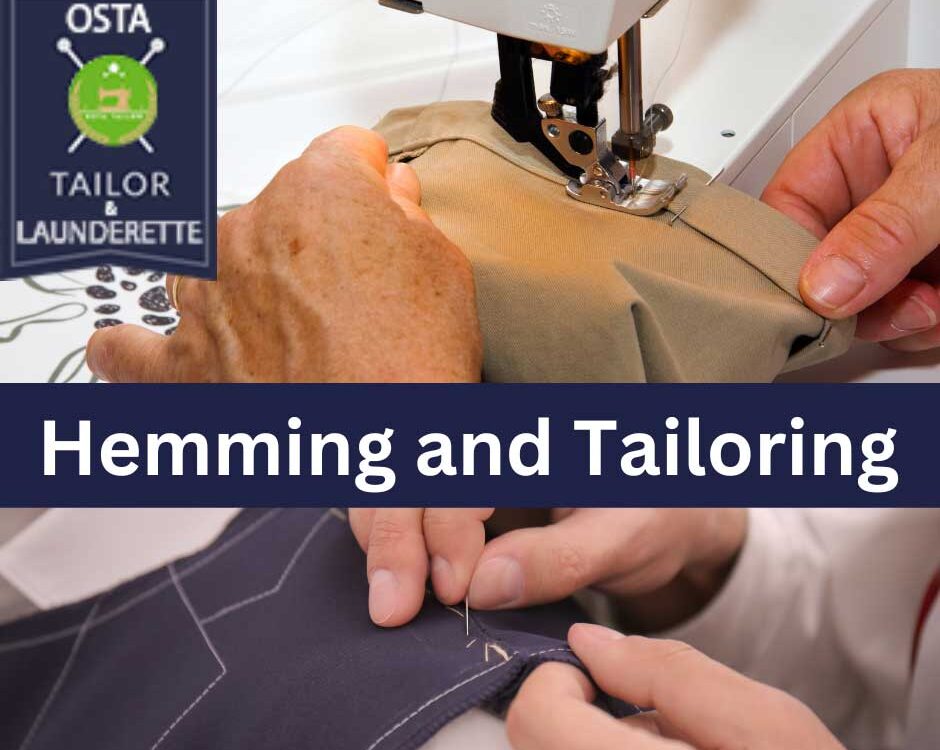Tailoring & Laundry history
Osta, a trailering and laundry shop in Cardiff, provides the best service for the customer. They offer a tailor shop near me, who works on pants, jeans, shirts, curtains, and other items, as well as a superb dressmaker in Cardiff. While you wait, they can make emergency changes specific to your needs in 10-15 minutes. You will not be disappointed with our 20 years of experience as dress alterations near me. Osta has the knowledge and ability to custom design any garment modifications in Cardiff you choose.
We provided information on Osta, but the history of tailoring and laundry was our main concern.
History of tailoring
Nowadays it is very easy to find a tailoring or laundry shop. You just have to search for a tailor shop near me and Google will show you the nearest shop. But do you think about how the tailoring service or business has come?
Anyone who has ever attempted to sew a garment knows that the most crucial aspect of the finished product is how well it fits. The art of tailoring entails designing, fitting, producing, and finishing clothing. The word “tailor” derives from the French word “tailler,” which means “to cut.” It was first recorded in the Oxford Dictionary in 1297. The Latin word for tailor was sartor, which meant “one who mends or patches garments.” The English word “sartorial” refers to something linked to tailored garments.
Tailoring has been practiced since the early Middle Ages. Some of the first tailors were linen armorers, which meant they made tailored, cushioned linen garments to wear under chain mail to protect the wearer from chafing caused by heavy armor. The first tailor’s guilds in Europe arose from this occupation. Between the 12th and 14th centuries, tailoring in Western Europe began to develop. Previously, clothing was usually fashioned from a single piece of cloth and was designed solely for the function of covering or hiding the body; the creator or wearer of the garment was unconcerned about individual style.
Tailoring was regarded as a reputable profession by the 1100s. In 1100, King Henry I granted the Taylors of Oxford royal rights. In 1299, the London Guild of Taylors and Linen Armorers received royal arms. In 1293, the Tailleurs de Robes was granted a royal charter, and in 1588, all French tailors (from linen armorers to robe makers to hose manufacturers) were brought together under one flag.
Tailoring has been taught through apprenticeship since its inception, with a master tailor instructing an aspiring tailor through practical experience. Apprentices were taught how to mold woolen material to the shape of a person’s body.
History of Laundry
As you earlier searched “tailor shop near me” to find a tailor shop, you have to do a similar thing to get a laundry shop. Let’s move on to the history of laundry.
Ancient Roman Laundry
Almost everything new, as we all know, is quickly forgotten. In the case of ancient Roman laundry, this is particularly true. Romans were the first to provide public laundry services because of their advanced urban networks. The clothing washers, known as full ones, were in charge of washing and cleaning the apparel of Roman residents.
Because the Romans wore woolen clothes (there was no cotton in ancient Rome), they needed to be washed frequently due to the hot temperature of Italy. Pliny and other writers have described how this was accomplished, but some paintings discovered on the walls of a fullonica (laundry business) at Pompeii provide the most detailed explanation.
Ancient Europe Laundry
When it came to laundry, medieval Europeans, unlike ancient Rome, tended to rely on their forces rather than public services. Even if the rivers were frozen, this was usually done on river banks. This required the use of specialized equipment, such as washing bats and scrubbing boards.
They were used to agitate clothing in running water to remove dirt and smooth the fabric during drying. There was no ironing done at the time. The garments were stretched out flat on the ground after a thorough wash to allow the sun to bleach and dry them.
Such an exercise was not done every week, but rather when a substantial enough amount of dirty clothes had been collected. Lace collars, trims, and fine undershirts were cleaned separately and used less abrasive procedures more often.
Washerwomen who were compensated for their service used soap, primarily soft soap prepared from ash lye and animal fat. In medieval times, soap was infrequently used by the poorest people, but by the 18th century, it was rather common: it was occasionally retained for nicer clothing and for fighting stains, rather than being used for the entire wash. For better quality linen and garments, starch and bluing were also available.
The First Washing Machines
Hand (or foot) laundry washing reigned for generations until H. Sidgier of Great Britain built the first washing machine in 1782. It was made up of a cage with wooden rods and a spinning handle.
In the late 1800s, various companies began developing hand-operated machines that used paddles or dollies based on this principle. Then, in 1851, James King invented the revolving drum. In 1858, Hamilton-Smith produced a revolving drum with reversing motion, which was quickly followed by a rotating drum with reversing action.
Many American manufacturers began offering machines with a spin-dry option in the early 1950s to replace the wringer, which removed buttons and created hair and hand mishaps. GE introduced a washing machine with five push buttons for controlling wash temperature, rinse temperature, agitation speed, and spin speed in 1957.
A tailor shop near me – Osta history
I recall going to the market with my father and being taken to the tailor shop to pick up his stitches and modified garments. I was astounded by that labor, and I enjoyed it so much that when I was older, my father hired me as an apprentice in my hometown of Ras Al Ain, Syria. The famous tailor’s name was George Tailor, and with my love and dedication, I mastered all of the tailoring repairs and alterations work in a short period and did it for 6 years.
I made the decision to start my own business, and in 2002, I launched my shop and began working cheerfully. When the war broke out, we Syrians lost everything in the process. Finally, with the assistance of the British government, I was able to relocate to the United Kingdom. I adore Wales; when I first arrived, I lived in Cardiff and worked as a delivery driver at Indigo Indian Takeaway. After three years of hard work, I’ve chosen to follow my dream and operate my launderette on Albany Road in Cardiff.
Cardiff is a lovely city, and what better place to go for modifications than the Osta self-service launderette near me? Between City Road and Crwys Road Junction No 5A Albany Road, there is an OSTA Albany Road Launderette. We are only across the corner whenever you need your laundry or any alterations.
The Journey Begun
It is not easy to start with, we looked for a marketing agency then we found the LS Digital marketing agency they built our website and do all the marketing for us.
We offer a variety of services, including tailoring near me, where we work on trousers, jeans, shirts, curtains, and other types of clothes, as well as the best dressmaker in Cardiff. While you wait, we can make emergency changes to fit your needs in 10-15 minutes. You will not be disappointed with our 20 years of experience as a dress alteration near me. Osta has the knowledge and ability to custom design any garment modifications in Cardiff you choose.
We may make major or little alterations to ready-to-wear or made-to-measure clothing to meet your needs. With my tailoring and modifications experience, I can adjust trousers, jeans, dresses, skirts, shirts, suits, jackets, coats, and waistcoats. My goal is to satisfy and make you appear and feel great and comfortable.
So, if you’re seeking to tailor modifications in my area, you’ve come to the right place. We have dry cleaners in Cardiff at Osta, and we can provide you with any laundromat near me service you desire. Everything is under one roof, so you don’t have to go anywhere else for tailoring, alteration, or self-service laundrette near me. Trust me you don’t have to search ” tailor shop near me” as you searched earlier.




